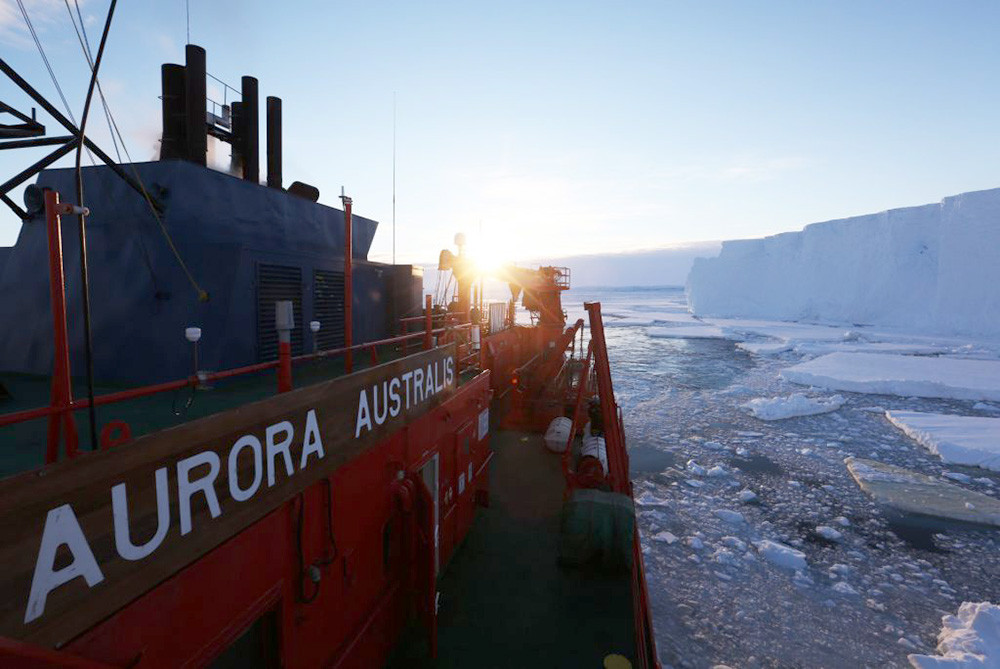ACE NEWS (NOVEMBER 2014)
Researchers to probe Totten mystery

The Totten Glacier is misbehaving. Unlike the other large glaciers that flow from the vast East Antarctic Ice Sheet, the Totten has begun rapidly thinning. Finding out why this is happening – and the likely impacts on future sea levels – is emerging as one of the most important projects in polar science today.
Until just a few years ago it was thought that the East Antarctic Ice Sheet was relatively immune to the rapid glacial retreat observed in places like West Antarctica and Greenland. The glaciers of the much smaller West Antarctic Ice Sheet have been in retreat for several decades, and today they are relatively well studied and understood.
Scientists have described the West Antarctic as having a “soft underbelly”, meaning that the glaciers rest on bedrock below sea level and are more susceptible to melting through physical interaction with the warming ocean. One example is the Pine Island Glacier in West Antarctica, which flows at nearly twice the speed than it did in 1970 and releases more ice into the ocean than any other glacial drainage basin in the world.
The East Antarctic Ice Sheet was always thought to be a different story, partly because of its sheer size. It is the largest ice sheet on earth by an order of magnitude. To put its size into perspective, consider that sea levels worldwide would rise by 50 metres if was to melt completely. Melting of this magnitude is of course extremely unlikely, but satellite and aerial observations of the East Antarctic Ice Sheet have detected some notable changes in recent years. The most dramatic is the retreat of the Totten Glacier, which is now disappearing faster than any other glacier in Antarctica.
One clue to the mystery is the very recent discovery that Totten, too, might have a soft underbelly. This was one of the biggest surprises to emerge from the recent ICECAP aerial survey of East Antarctica, which revealed that much of the Totten basin is grounded well below sea level. Before ICECAP, it was thought that nearly all of the East Antarctic Ice Sheet sat high and dry.
To build a picture of what this discovery could mean for future sea levels we have to travel back to Antarctica in the Pliocene, about three million years ago. At that time atmospheric carbon dioxide levels were about the same as today – but sea levels were about 20 metres higher. The glaciers of the early Antarctic ice sheet in this region were much more unstable and dynamic, carving out the deep glacial valleys that ICECAP’s ice-penetrating radars have only recently revealed.
Put simply, the Totten could be East Antarctica’s Achilles heel.
If the soft-bellied Totten was to return to its dynamic Pliocene state due through melting, it has the potential to shift massive volumes of glacial meltwater to the oceans – more than either the Greenland or West Antarctic ice sheets. Although far from certain, it is possible that we are witnessing the early stages of a runaway melting event.
Until only recently, this region was one of the least studied parts of the Antarctic. No ship had been within 100 kilometres of the glacial edge until earlier this year, when a team of scientists travelled to the region aboard the Nathaniel B Palmer as part of a joint US-Australian project.
The team, which included members of the ACE CRC Oceans program, deployed moorings to take ocean measurements throughout the winter. The moorings are set to be recovered by the RSV Aurora Australis in December, and the data gathered will give us a much better idea what is happening to the Totten Glacier. By measuring the temperature, salinity and oxygen levels in the water, as well as the presence of helium and oxygen isotopes, we can obtain high-resolution insights into the rate of glacial retreat and the factors driving it.
The Totten Glacier is one of the most important regions in the scientific study of climate change and sea level rise today, and this voyage will be crucial in understanding its complex changes.






















